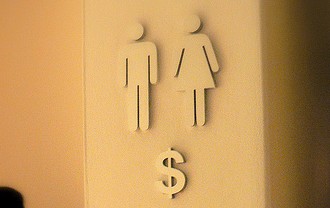
“Pomp and Circumstance” is no longer ringing in the rafters at college arenas across the country, and many members of the Class of 2013 are searching for their first post-graduation jobs. One wrinkle: though more than half of those graduates are female, according to a report by the American Association of University Women (AAUW), men working full-time one year after graduation will receive salaries that are 18% higher.
The study pushes back against notions that women’s wages are lower because of decisions now made later in the life course (such as leaving the corporate ladder to have children, for example). Researches found that approximately two-thirds of the pay gap just one year after graduation can be explained by field of study, grades, hours worked, and occupation, but the remaining portion is unexplained—that is, the only commonality is that the people getting the lower salaries are women.
The fact that so much of this pay gap escapes explanation poses a problem for rectifying the situation. Christianne Corbett, a senior researcher with the AAUW and one of the study’s authors, explains:
The pay gap cannot be solved by individual women alone. The bulk of the work has to be done by employers because it’s a systemic problem.
Learning is good, but doing will be better.

Comments 2
Friday Roundup: June 7, 2013 » The Editors' Desk — June 7, 2013
[...] Graduates: The Pay Gap Starts Now on Citings and Sightings [...]
Doc Truli — June 24, 2013
It's insidious. One interviewer said,"I'd offer you more if you were a man with a family to support." another said,"I really want to hire a man because I think my female clients will be jealous of a professional woman." I mean, it just goes on and on. Try suing these people and then try to get hired later. Good luck. A woman will be ostracized for that. I've seen it with unequal pay cases that the woman has won and then had to move out of the state b/c she was blacklisted as a "troublemaker." women need to hire women the way men hire men. Stop being so fair and help other women!